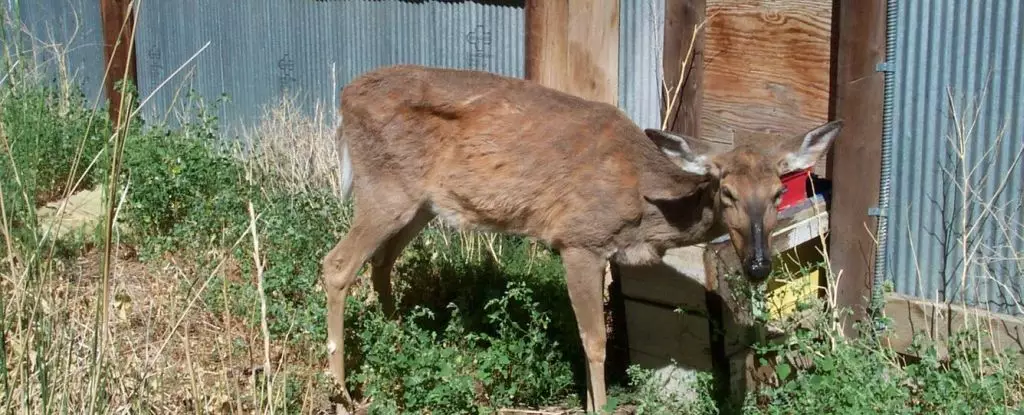A recent medical case report has raised concerns regarding the possible transmission of chronic wasting disease (CWD) from deer to humans. The report suggests that two hunters died after consuming venison from deer infected with CWD, a fatal prion disease often referred to as “zombie deer” disease. This zoonotic leap from animals to humans has sparked fears of a potential public health crisis.
Prion diseases, such as Creutzfeldt-Jakob disease (CJD) in humans, are characterized by the misfolding of proteins in the brain. These misfolded proteins spread rapidly, causing irreversible damage and eventually leading to death. The symptoms of prion diseases mimic fast-tracked dementia, making them difficult to diagnose in living patients. The lack of immune response further complicates the detection and treatment of these diseases.
Chronic wasting disease primarily affects animals like deer, elk, and moose, with concerns about its transmission to humans growing. Research has shown that CWD can infect animals with human genetic material in laboratory settings, raising alarms about the potential risks to human health. Despite these warnings, a significant number of animals infected with CWD are being consumed each year, exacerbating the threat of transmission to humans.
The two hunters described in the case report presented with rapid-onset confusion and aggression before succumbing to prion diseases, one of whom was confirmed to have died from CJD. The source of their illness remains uncertain, with the possibility of spontaneous emergence or other unknown factors playing a role. The geographic spread of CWD across North America further complicates the investigation into potential sources of transmission.
The case report underscores the need for further research into the risks associated with consuming CWD-infected deer. The potential for cross-species prion transmission from animals to humans highlights the importance of caution and vigilance in handling and consuming venison. The emergence of sporadic cases of CJD in regions with confirmed CWD-infected deer populations signals a troubling trend that warrants immediate attention.
The alarming findings of the case report suggest a possible connection between CWD-infected deer and fatal prion diseases in humans. The implications for public health are significant, emphasizing the need for proactive measures to mitigate the risk of transmission and prevent future outbreaks. Further research and surveillance are essential in addressing the potential threat posed by zoonotic prion diseases and safeguarding human health.

Leave a Reply